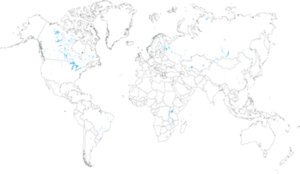
We are in an era where medical outreaches are becoming the new waves of community engagement. Somewhere in the part of a remote, or not-so-remote community, there is yet another plan to embark on an outreach. Preparations are top geared; making provisions for consumable kits, drugs, tools for vital assessments and so on. In this part of the globe called Nigeria, there is an underlined reason for such revival of medical outreach.
The Nigerian Healthcare facility is largely divided into the Primary, secondary and tertiary system; which can either be public or private. The dynamics of their operation is supposed to represent an integrated system that caters for the wellbeing of the populace. But is this the case?
According to the Nigeria Health Sector: Market Study Report, commissioned by the Embassy of the Kingdom of Netherlands in Nigeria and put together by PharmAccess Foundation’s Nigeria Office (PAF), there are 34, 076 Primary Healthcare Centers in Nigeria, accounting for 85.3% of total hospitals and clinics in the country. Ideally, they are meant to be closer to the patients, with efficient hands to manage health issues, through a strong connection to secondary and tertiary facilities, in cases of referrals. However, only 20% are functional.
To curtail this challenge, there is the rise of community-led medical outreaches, targeted to enhance the efforts of all the healthcare facilities. While some of these outreaches are championed by individuals who want to give back to their background community, others are by concerned citizens, who have lived in a community, enough to identify a health gap. You can also find Non-governmental organizations, Military organizations, Medical CDS groups of National Youth Service Corps and a host of other stakeholders concerned, involved in this. They are all after the betterment of a system that needs help.
Notwithstanding, a lot needs to be done in organizing outreaches. It is one thing to want to help, it is another to be equipped with the requisite insight on how to be of help.
This article captures key considerations for anyone that is planning a community-led medical outreach. It presents practical recommendations, drawn from common setbacks in community-led health intervention programs.
What are these five common mistakes, and how can they be addressed?
- CHOOSING A COMMUNITY OF INTEREST ISN’T ENOUGH; BE MORE SPECIFIC
After close observation of the outreaches carried out, I have come to understand that most outreaches are location centered. They do not effectively capture the depth of demography. That is to say, their target is channeled to just a place, not necessarily targeting an age, gender, economic class, etcetera. As much as covering the broad spectrum of a place is good, there is only how far a community target outreach can cover. Specificity is an asset. For instance, rather than constantly have community as a target, why not have a target age-group, in that community. Let’s say this outreach is to Sabon-Tasha area of Southern Kaduna-Nigeria, with emphasis on people of age 60 years and above. The more specific the outreach, the more effective the impact assessment.
You can have ten outreaches in a community, in one year; but each have their target demography.
With this, your findings can give more information, as to the state of health amongst the demography of interest.
2. ASSESS THE NEED; ENOUGH TO BE SURE OF THE SOLUTION YOUR ARE OFFERING
When carrying out an outreach, understand the gap. Carry out a soci0-demographic studies. Review the health intervention measures once recorded. You know why? To avoid repeating cycles. The quest is to advance the wheels of development, not to repeat unproductive cycles.
What was done before?
Did it work?
If yes, how? For how long?
If No, why?
What do we need to do better, to ensure sustainability?
Because sometimes, trying to solve a problem, without understanding the situation, will unconsciously add to the problem.
Let me give you an example…
In a certain Community, 70% of the population that turned out for a pioneer Hepatitis screening outreach were negative to Hepatitis B virus (HBV), using strip test.
During the second outreach, 60% were negative. Upon close studies, it was observed that the population of those who turned out for the first outreach were less than the second outreach.
So massive publicity was carried out for the third outreach. People came out en masse. HBV test was carried out, boom! 50% were found positive.
What would have increased the population of positive cases?
Here’s my submission…
Emphasis was not placed on vaccination.
Those who discovered they were negative, became more nonchalant to future test. Possibly, they thought that once negative, is always negative.
They don’t know what’s going on.
Majorly, the outreach coordinators didn’t understand the need of the moment. It was to place emphasis on vaccination, not just repeat another cycle of hepatitis testing.
3. THE CROSS OF STRENGHTENING COMMUNITY-LED HEALTHCARE IS NOT YOURS TO CARRY ALONE; SEEK PARTNERSHIP/COLLABORATION
Irrespective of your passion for healthcare delivery in your community, know that the burden is too heavy for you alone. Normalize the place of partnership.
Seek Partnership, identify organizations that can amplify your voice. They might not have financial resources to offer, but there are different ways they can come in. They can offer laboratory consumables, publicity, expert advice, etcetera. Be bold to let them know how this partnership can be of benefit to them.
You have data to offer. This data will represent the impact of your campaign on the global scale.
You’re not doing this to make a name for yourself, collaborate with peers, advanced social innovators and institutions.
This is how to make little drops rise to oceans.
It is how to reflect local impact on the global sheet. How to make the global data, a true representation of the situation in communities.
4. DON’T GET CAUGHT UP WITH BEING DRIVEN BY PASSION, THAT YOU FORGET TO BE DATA DRIVEN
As your heart is soaked with compassion, to see the smile on the faces of the life’s touch, let your mind be moved to drive your impact in a data sheet. Trust me, when the whole euphoria settles, you will need to proof to the world that these were not just tales, they are result-driven projects. How can you do this? Draw evidence from your data bank.
Your outreach team should not just constitute health personnel. Go a step further, have data analyst in your team. The place of a well detailed data will be needful for impact assessment; especially if you have a clear aim. But if you don’t, there is no need to bother.
More so, it will be a tool that speaks of your results, which you will need to present to future partners.
There are great minds that won’t take you serious, until you convince them that what you are doing is worth their attention. This is your deliberate effort to planning for such times.
When the ball rolls; it needs to keep rolling. Data saves you the stress of explaining without evidence.
That is not all, try to have a reputable organization capture this data. Who recommends your evidence is of essence.
5. BEYOND THE ASSIGNED DATE(S) OF CAMPAIGN, HAVE A FOLLOW-UP/TRACKING SYSTEM
An outreach does not end at the end of the on-site activity. On a serious note, it should be when the real work begins. Assess the impact of the outreach. Assess the assets. By assets, I mean the target population. Plant your project in the hearts of some torchbearers in the community, let them be your advocates, ensuring that you still have a link to that community. Let them have access to hotlines or go-to mediums, so their concerns can be attended to.
Track the positive cases of test carried out. Be involved in seeing that they heed to your advice. That they comply to the drugs you recommended. Let them go for confirmatory check-ups, complete dose of the vaccines. Make a functional tracking system that ensures they do.
Let them know the danger that comes with nonchalance. Create a team policy, that reminds them. If the government can’t remind them to come for routine check, you can. If they forget to complete vaccine dosage, or even begin, let them wake up to your reminder. Come what may, be involved in the decisions they take.
Else, you’ll come back, and meet the house, dirtier that when you first meet it.
Community-led outreaches, when done rightly, can cushion the gross effect of a deranged healthcare system, especially in rural and slum settings. The wave of its rise is commendable, but it is our joint responsibility to see that its impact effectively bridges the gap. It starts by choosing to do it right, when others are just doing it.







